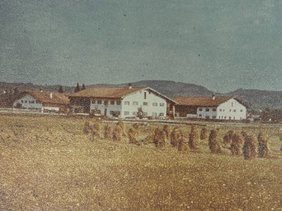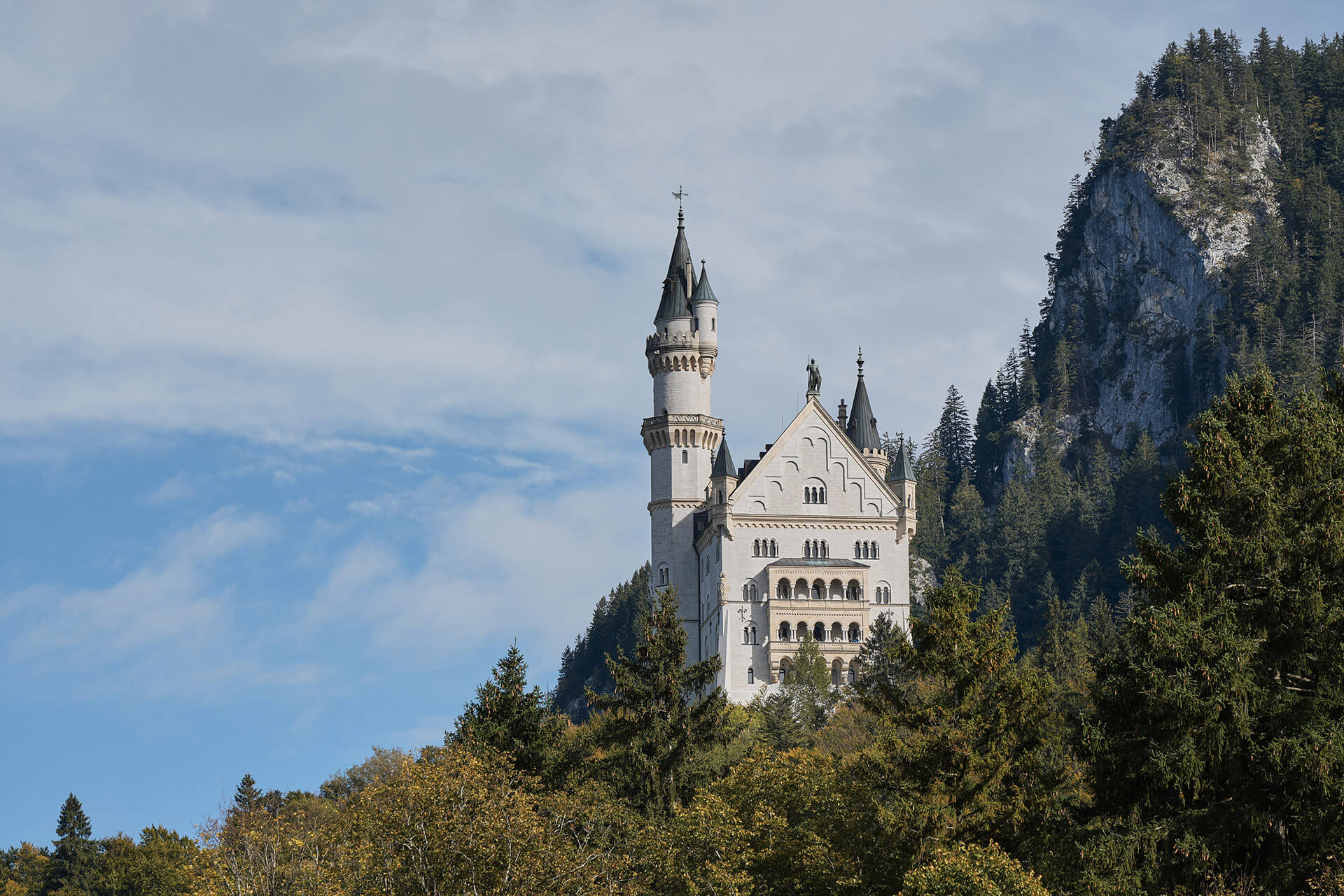Forggen, Lake Forggensee and a Landscape That Lives Twice
A place that no longer exists – and yet reappears
In summer, Lake Forggensee lies peacefully nestled in the picturesque Alpine foothills of the Ostallgäu region. Sparkling water, sailing boats, green shores – with Neuschwanstein Castle in the background, seemingly untouched by time. But what appears today to be a natural paradise was, seventy years ago, a very different valley: inhabited, cultivated, alive.
Several villages and hamlets disappeared beneath the water. Among them part of the village of Brunnen, as well as Deutenhausen and Forggen. The village of Forggen, which gave the lake its name, consisted of five addresses and eight buildings. Where waves roll today, there once stood farmhouses, fields, and apple trees. And every year, when the water recedes in autumn, a piece of this past returns.
The day the valley disappeared
The decision to dam the River Lech was made in the 1950s – in the spirit of economic growth, technological progress, and hydropower. The new reservoir was intended to provide flood protection, generate electricity, and tame the Lech. For this, the Forggen Valley had to be sacrificed. Around 50 inhabited buildings, including 16 farms with 800 hectares of arable land, were relocated. Houses were dismantled, roads removed, graves relocated. Residents were resettled in surrounding communities, where BAWAG offered them homes and farms as compensation. Some, however, were relocated to more distant towns. Some found a new home – but many lost more than just a roof over their heads.
A lake with two faces
Forggensee is both a technical and natural curiosity: as a seasonal reservoir, it is almost completely drained every winter. What remains is a fascinating sight – a dried-out lakebed with visible traces of the past. Hiking trails then lead across the former settlements – past old walls, remnants of barns, and bridge foundations. In the fog or morning frost, the landscape feels almost ghostly. And yet, it possesses a quiet beauty – a kind of reconciliation between past and present.
Between history and the present: Forggensee today
As much as the history lingers beneath the surface, Forggensee is vibrant today: in summer, it’s a popular destination for cyclists, water sports enthusiasts, families, and those seeking relaxation. And rightfully so.

Experience & unwind at Forggensee
Cycling:
A loop of approximately 32 kilometers circles the lake – mostly flat, perfect for e-bikes and families. Again and again, the route offers breathtaking views of the Alps and the royal castles. Rest stops along the way make the tour especially enjoyable.
Stand-up paddling & water sports:
The lake’s clear, calm water is perfect for stand-up paddling – especially in the early morning, when golden light reflects on the water. Sailing, kayaking, and pedal boats are also popular. Several rental stations are available, including in Füssen and Schwangau.
Swimming:
There are several designated swimming areas – with shallow shores, grassy areas, playgrounds, and parking. Particularly popular: the bathing area near Dietringen and the peninsula near Waltenhofen.
Forggensee cruises:
From June to October, excursion boats operate on the lake. The full round trip takes about 1.5 hours – including panoramic views of Neuschwanstein Castle. The shorter tour lasts about 1 hour. The boat company also offers various themed cruises, including evening tours with storytelling or live music. Perfect for those who want to combine nature and culture in a relaxed setting.
Tip for explorers: Walk on the lakebed
Between October and May, when the water level is low, you can hike across the lakebed – through a landscape normally hidden from view. Sturdy shoes are essential, and a bit of imagination helps: where now there is only mud and stones, once stood the homes of the former "lake residents."
Conclusion
Forggensee is far more than just a reservoir. It is a monument in water, a place full of stories, contrasts, and possibilities. Whether walking across the dry ground, cycling along the shore, or paddling on the lake – you can feel it: the past doesn’t just live on in stories here; it lives in the very earth. And it returns every year with the changing seasons.
Facts:
- Surface area in summer (fully filled): approx. 15.2 km²
- Germany’s largest reservoir (by area)
- Fourth-largest lake in Bavaria
- Maximum length: approx. 12 km
- Construction period: 1950–1954
- Commissioned: 1954
- Location: near Füssen/Schwangau in the Allgäu region, Bavaria
- Purpose: flood protection, hydropower, water regulation for the River Lech
- Dam system: part of the Lech reservoir system operated by Uniper Kraftwerke GmbH



